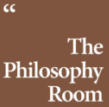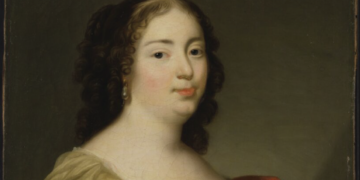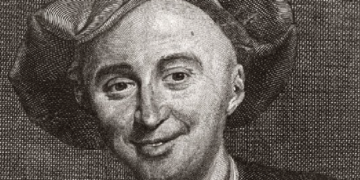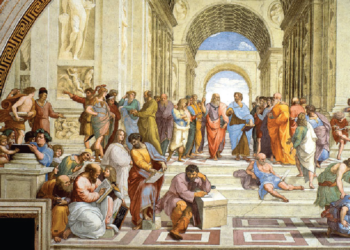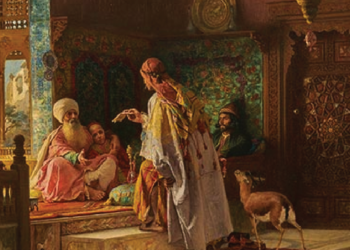Charlotte Perkins Gilman
1) Her Biography
Charlotte Perkins Gilman was born on 3 July 1860 in Hartford, Connecticut, into a family with a notable literary heritage. Her father, Frederic Beecher Perkins, was related to the prominent Beecher family, including Harriet Beecher Stowe, author of Uncle Tom’s Cabin. However, her father abandoned the family when Charlotte was still a child, plunging her early life into financial hardship and social instability. Raised largely by her mother, Charlotte experienced a transient upbringing, moving frequently and receiving only an irregular formal education. Nevertheless, she developed a keen sense of observation and an early awareness of the social roles imposed upon women.
Despite the limitations of her early life, Gilman demonstrated a strong intellectual independence. She briefly attended the Rhode Island School of Design, supporting herself as a commercial artist and tutor. In 1884, she married Charles Walter Stetson, a marriage that would prove foundational to her later feminist critique. The birth of her daughter, Katherine, and the severe postpartum depression she suffered in the aftermath would become the inspiration for her most famous work, The Yellow Wallpaper. This short story is a semi-autobiographical account of her mental illness and the oppressive treatment she received under the prevailing “rest cure” method.
Gilman separated from her husband in 1888, an unusual move for a woman of her time, and later sent her daughter to live with her ex-husband and his second wife—her own close friend. Though controversial, this decision reflected Gilman’s deep belief that women needed freedom from domestic constraints to fulfil their intellectual and creative potential. In the years following her separation, she embarked on a prolific writing and lecturing career, advocating for women’s rights, economic independence, and social reform. Her experiences and reflections on the family structure, gender roles, and societal expectations were central to her growing public influence.
The 1890s marked Gilman’s emergence as a public intellectual. She became involved in the suffrage movement, contributed to feminist periodicals, and delivered lectures across the United States and abroad. Her landmark publication Women and Economics (1898) cemented her status as a key thinker in the burgeoning field of feminist political economy. In this work, she argued that the economic dependency of women on men was the root cause of their subjugation. Her call for the transformation of domestic labour and gendered divisions of work resonated with many early 20th-century reformers.
Gilman also expressed interest in architecture and urban planning, advocating for cooperative housing and social infrastructure that would relieve women of the burdens of housework and childcare. Her utopian novel Herland (1915) offered a vision of a society governed entirely by women—peaceful, rational, and free of patriarchal violence. The novel imaginatively underscored her belief that gender equality was not only desirable but necessary for human progress. It also demonstrated her unique blend of fiction and political theory.
Later in life, Gilman faced personal and public challenges. She married her cousin, Houghton Gilman, in 1900, and continued her writing career, though her popularity waned in the interwar years. She was diagnosed with breast cancer in 1932 and, believing in euthanasia as a rational choice, she took her own life in 1935. Her suicide was both a personal decision and a reflection of her commitment to autonomy, a principle that had guided her life and work.
Gilman’s ideas, while often progressive, were not without controversy. Some of her writings contain eugenicist and racially exclusionary views, which have rightly come under critical scrutiny. These elements complicate her legacy, as they stand in tension with her broader commitments to justice and reform. Nonetheless, her foundational contributions to feminist thought and her fearless critique of patriarchal structures remain deeply influential.
Today, Charlotte Perkins Gilman is recognised as one of the early architects of American feminism. Her work continues to be studied for its incisive analysis of gender, power, and society. By transforming her personal struggles into a broader critique of systemic oppression, she helped shape the discourse on women’s rights and left a lasting mark on literature, sociology, and feminist theory.
2) Main Works
The Yellow Wallpaper (1892)
This semi-autobiographical short story is Gilman’s most famous and haunting work. It follows the mental descent of a woman confined to a room by her physician husband under the “rest cure” for what is assumed to be hysteria or postpartum depression. Narrated in diary form, the story charts the narrator’s growing obsession with the yellow wallpaper in her room, ultimately leading to a psychotic break. The piece is a searing critique of the medical and patriarchal control over women’s bodies and minds, and it remains a cornerstone of feminist literature.
Women and Economics (1898)
This influential nonfiction treatise presents Gilman’s central thesis: that women’s economic dependence on men is the root cause of their subordination. She calls for women to have equal access to work, education, and economic resources, challenging the traditional family structure and gender roles. The book was widely read in its time and remains a seminal text in feminist economic theory. Gilman argued for the professionalisation of housework and proposed radical social reforms such as communal kitchens and childcare facilities to liberate women from domestic confinement.
The Home: Its Work and Influence (1903)
In this work, Gilman expands her ideas on domestic life, criticising the conventional idealisation of the home as a feminine sanctuary. She argues that the domestic sphere, rather than nurturing women’s potential, actually impedes their development by restricting them to repetitive, undervalued labour. Gilman urges the restructuring of the home to promote social cooperation and efficiency, advocating a model that would allow women greater freedom to participate in public and intellectual life.
Human Work (1904)
This philosophical text broadens Gilman’s economic arguments, proposing that work is a fundamental human activity that gives life meaning and dignity. She contends that the exclusion of women from productive labour has distorted human society. Gilman asserts that meaningful, creative work should be accessible to all, regardless of gender, and sees this as a precondition for societal progress. The book is a passionate appeal for gender parity in the workplace and a critique of idle wealth and inherited privilege.
Herland (1915)
A utopian novel, Herland imagines a secluded society composed entirely of women who reproduce asexually and live in harmony without conflict, war, or domination. The story unfolds through the eyes of three male explorers who stumble upon this hidden society. Through their reactions, Gilman explores themes of gender, motherhood, social organisation, and education. The novel challenges patriarchal assumptions and envisions an egalitarian future founded on reason, care, and cooperation. It is often considered a landmark in feminist science fiction.
With Her in Ourland (1916)
A sequel to Herland, this novel follows the same characters as they travel through the outside world, bringing Herland’s ideals into contact with the social and political realities of the early 20th century. The book shifts from imaginative utopia to social commentary, as Gilman critiques nationalism, war, racism, and economic inequality. While less celebrated than its predecessor, it reflects her persistent commitment to reform and her belief that moral clarity and feminist values could transform society globally.
The Man-Made World; or, Our Androcentric Culture (1911)
This collection of essays critiques the male-dominated perspective that, according to Gilman, has shaped every aspect of culture—from science and education to art and ethics. She argues that androcentrism has distorted the development of civilisation by excluding the female point of view. The essays challenge accepted norms and call for a rebalancing of gendered contributions to culture and knowledge, making the book an important feminist document.
His Religion and Hers (1923)
In this later work, Gilman turns her critical eye towards organised religion. She contends that existing religions have reinforced male dominance and subjugated women by portraying the divine in masculine terms and perpetuating doctrines of female inferiority. Gilman proposes a new, woman-centred spiritual vision that celebrates life, nurturance, and equality. Though controversial, the book exemplifies her bold intellectual scope and her belief in the power of culture to shape human values.
3) Main Themes
Gender and Economic Dependence
A central theme in Gilman’s works is the economic subjugation of women. She argued that traditional marriage and domestic roles rendered women financially dependent on men, which she viewed as the root of gender inequality. In Women and Economics, she systematically deconstructed the assumption that women should be confined to the home, advocating for their full integration into the workforce. By linking economic independence to personal freedom, Gilman challenged the prevailing norms of her era. She believed that if women were given the opportunity to earn their own living, they would be free to develop intellectually and spiritually, ultimately contributing more meaningfully to society.
The Critique of Domesticity
Gilman was deeply critical of the sentimentalisation of the home as a woman’s sole domain. In The Home: Its Work and Influence, she portrayed the traditional household as an isolating and unproductive space that stifled women’s potential. She proposed structural reforms, including communal kitchens and professional childcare services, to ease the burden of domestic labour. Gilman argued that the glorification of unpaid housework devalued women’s contributions and perpetuated their exclusion from public life. Her critique anticipated later feminist discussions around the division of domestic labour and the “second shift.”
Mental Health and Patriarchal Control
Gilman’s short story The Yellow Wallpaper poignantly explores the intersection of mental health, gender roles, and authoritarian medical treatment. The story draws from her own experience with postpartum depression and the oppressive “rest cure” imposed on her by male doctors. The theme highlights how patriarchal authority in medicine often invalidated women’s experiences and exerted control over their bodies and minds. The narrator’s descent into madness becomes a powerful metaphor for the psychological damage inflicted by societal repression. This theme remains resonant in contemporary discussions about gender and mental health.
Utopian Feminism and Alternative Societies
In Herland and its sequel With Her in Ourland, Gilman imagined societies that operated entirely outside patriarchal norms. These utopian visions showcase peaceful, rational, and egalitarian communities governed by women. By presenting alternatives to war, greed, and male dominance, she posed a direct challenge to the social order of her time. Gilman’s feminist utopianism was not escapist; rather, it was a tool for critique and a method of proposing practical social innovations. Through these fictional societies, she explored the possibilities of female leadership, collective childcare, and reproductive autonomy.
Cultural Androcentrism
In The Man-Made World, Gilman introduced the concept of androcentrism to describe how male perspectives had shaped knowledge, culture, and ethics to the exclusion of women’s experiences. She argued that civilisation had been defined and structured by masculine norms, which distorted everything from science and art to religion and education. Gilman believed that a more balanced culture—incorporating both male and female contributions—was essential for humanity’s moral and intellectual advancement. This theme remains significant in feminist epistemology and critiques of knowledge production.
The Role of Motherhood and Reproductive Autonomy
Gilman did not reject motherhood, but she believed it needed to be redefined. In works such as Herland, motherhood is treated not as a biological destiny but as a communal responsibility. She rejected the notion that women’s primary value was in their reproductive capacity, arguing instead that society should support mothers through shared resources and rational planning. Her emphasis on reproductive autonomy was innovative for her time and challenged both conservative and liberal norms around the family.
Education and Social Reform
A recurring motif in Gilman’s work is the transformative power of education. She viewed education as the key to women’s liberation and the foundation for a more equitable society. Her ideal education system would include both genders, remove gendered restrictions on learning, and promote critical thinking over rote domestic training. She also saw education as crucial for dismantling inherited prejudices related to race, gender, and class. This emphasis reflected her broader belief in the malleability of human nature and society through intentional reform.
Individual Autonomy and Rational Ethics
Underlying much of Gilman’s writing is a deep commitment to reason, self-determination, and ethical evolution. Whether she was critiquing religion in His Religion and Hers or analysing labour in Human Work, Gilman consistently advocated for rational ethics that moved beyond tradition and dogma. She urged society to develop moral systems based on collective well-being, gender justice, and human development. This theme reveals her deep optimism about human potential and her belief in the power of reasoned discourse to bring about social change.
4) Gilman as a Social Reformist
Charlotte Perkins Gilman was not only a pioneering feminist writer but also a dedicated social reformist whose intellectual activism extended far beyond literature. Her reformist vision was rooted in a belief that societal structures—especially those related to gender, labour, and domestic life—were neither natural nor immutable, but could be deliberately reshaped through education, policy, and collective will. Gilman was particularly critical of the rigid divisions between the public and private spheres, and she sought to reform the conditions that confined women to the domestic realm. She advocated for broad social changes that would allow women to participate fully in intellectual and economic life, seeing this as essential to both individual freedom and societal progress.
A central aspect of her reformist thought was her focus on the economic emancipation of women. Gilman believed that the dependence of women on male breadwinners was a form of slavery that curtailed women’s personal development and civic participation. Her works, such as Women and Economics, promoted a vision of a society where women were free to work, create, and contribute to public life on equal footing with men. She proposed reforms such as cooperative housekeeping, communal kitchens, and professionalised childcare services—ideas that prefigured modern debates around work-life balance and the redistribution of domestic labour. Gilman envisioned a society where the responsibilities of home and childrearing were social, not individual, concerns.
Gilman’s role as a reformist was not limited to theory; she actively engaged with reform movements and spoke at numerous conferences, women’s clubs, and academic institutions. She was an influential figure in the suffrage movement, aligning herself with other progressive causes such as labour rights, education reform, and pacifism. Gilman travelled extensively to lecture and debate, making her one of the few women of her time to speak internationally on feminist and social issues. Her charisma and clarity of thought made her a compelling public figure, and she used her platform to challenge deeply held social norms and promote structural change.
While deeply committed to women’s rights, Gilman’s vision of reform was also shaped by her interest in social efficiency and national progress. She believed that the exclusion of half the population from productive labour was not only unjust but economically irrational. In her mind, elevating the status of women was not merely a moral imperative, but a practical necessity for the advancement of civilisation. This utilitarian streak in her thought often intersected with a belief in planned social evolution, which she hoped could lead to a rational, cooperative, and peaceful society. Her utopian fiction, especially Herland, gave imaginative expression to these ideals, showing how gender equality could transform every aspect of life.
Nevertheless, her reformism was not without its problematic elements. Gilman’s commitment to social order and “progress” led her to adopt eugenicist views, particularly in her later writings. She advocated for the improvement of society through selective breeding and expressed concern about what she termed the “unfit” reproducing, views that were widely held among early 20th-century reformers but are now rightly condemned. Moreover, her vision of social reform was largely centred on white, middle-class women, and she often failed to address the intersecting oppressions of race, class, and colonialism. These blind spots limit the universality of her reformist project and complicate her legacy.
Despite these limitations, Gilman’s contribution to reformist thought remains significant. She combined incisive social analysis with an unwavering belief in the human capacity for improvement, and she developed practical proposals to realise her vision. Unlike many of her contemporaries, she did not merely seek to expand women’s rights within the existing system; she sought to transform the system itself. Her work laid the intellectual groundwork for later feminist debates on care work, gender and labour, and the politics of the family.
5) Her Legacy
Charlotte Perkins Gilman’s legacy is enduring and multifaceted, stretching across literature, feminist theory, social reform, and political thought. As one of the most influential feminist thinkers of the late 19th and early 20th centuries, she helped to reframe the conversation around women’s roles in society. Her work laid the groundwork for later feminist waves, especially the second-wave feminists of the 1960s and 70s, who drew heavily on her insights about gender, labour, and domesticity. The Yellow Wallpaper in particular has become a canonical text in both feminist and literary studies, often taught as a prime example of how personal experience can be turned into potent political critique.
In literature, Gilman’s contribution was groundbreaking. Through her fiction and nonfiction, she addressed issues long ignored by male authors and critics. Her use of fiction to critique societal norms, especially in works like Herland and The Yellow Wallpaper, helped to pioneer feminist science fiction and the use of allegory to confront gender oppression. She opened up literary space for women’s psychological and social experiences, highlighting themes of confinement, identity, and resistance. Her style—clear, direct, and polemical—served as a model for many feminist writers who followed, from Virginia Woolf to Margaret Atwood.
Gilman also left a profound legacy in feminist social and political thought. Her insistence on the economic dimensions of gender inequality was ahead of its time, anticipating later debates around the “feminisation of poverty” and the undervaluation of domestic labour. Her call for women’s economic independence and her criticism of unpaid housework were radical in an age when women were legally and culturally restricted to the private sphere. These ideas continue to influence contemporary feminist discussions on the division of labour, parental leave, childcare, and economic justice.
In terms of institutional and educational reform, Gilman’s legacy can be seen in the development of interdisciplinary fields such as gender studies, women’s studies, and feminist sociology. Her emphasis on systemic critique rather than individual blame encouraged scholars to examine how laws, traditions, and cultural norms perpetuate inequality. Her influence is evident in the way academic disciplines have increasingly incorporated feminist perspectives, moving beyond male-centred analyses of history, economics, and psychology.
However, her legacy is also complex and not without controversy. In recent years, scholars have scrutinised her eugenicist views and racially exclusionary rhetoric. Gilman’s belief in social efficiency and evolutionary progress led her to embrace ideas that promoted the control of reproduction among the “unfit,” and she rarely addressed the oppression faced by women of colour or working-class women. These blind spots have rightly led to a critical re-evaluation of her thought. Nonetheless, this complexity adds depth to her legacy, inviting readers and scholars to engage critically with both her insights and her limitations.
Beyond academia, Gilman has become a symbol of women’s resistance and intellectual resilience. Her personal defiance of restrictive gender roles, her struggle with mental illness, and her transformation of those experiences into political critique resonate with many today. Her life is often seen as a testament to the capacity of women to challenge oppressive structures and redefine the terms of their existence. Through her writings and her activism, she inspired women to imagine new possibilities for themselves and their societies.
In public memory, Charlotte Perkins Gilman has been honoured in various ways. Her work continues to be widely published, studied, and adapted, and she has been commemorated in literary anthologies, academic courses, and historical exhibitions. Yet her most significant legacy lies not in institutional honours, but in the intellectual and cultural shifts she helped catalyse. She dared to ask what kind of world might emerge if women were truly free—and in doing so, she helped generations of readers envision a more just and inclusive future.

